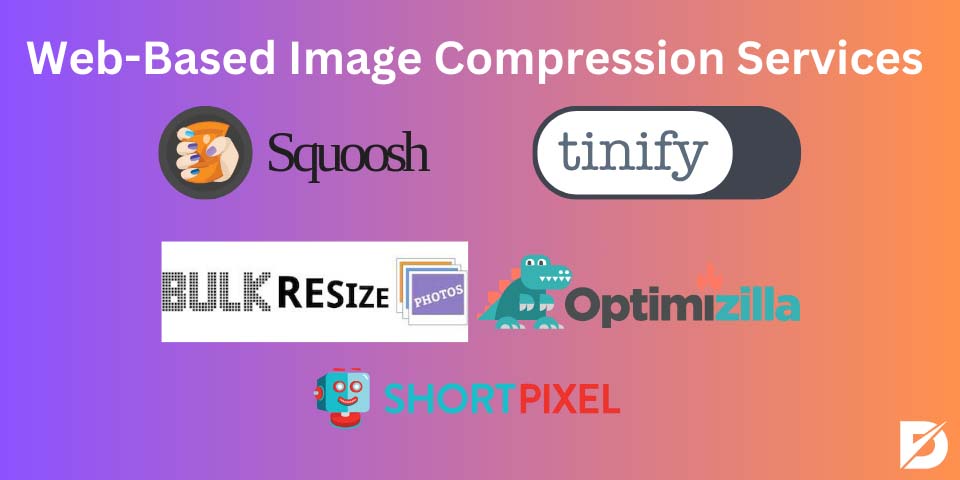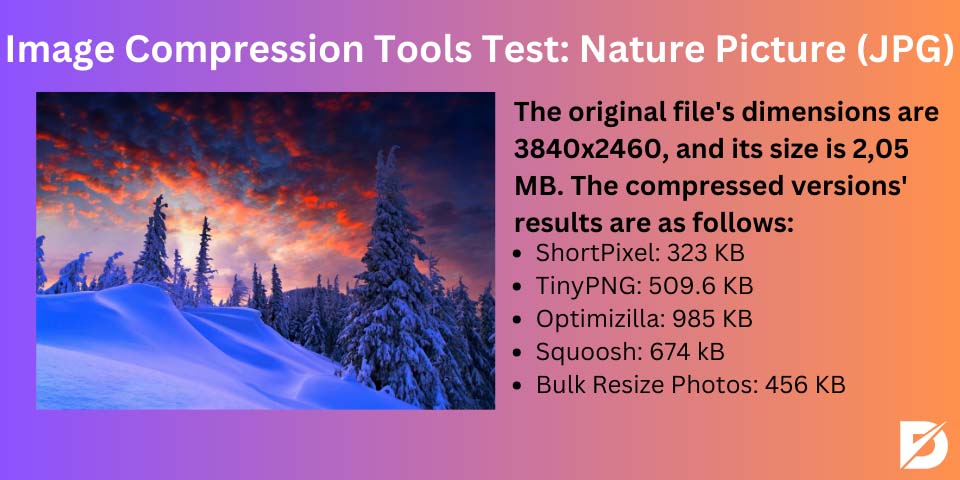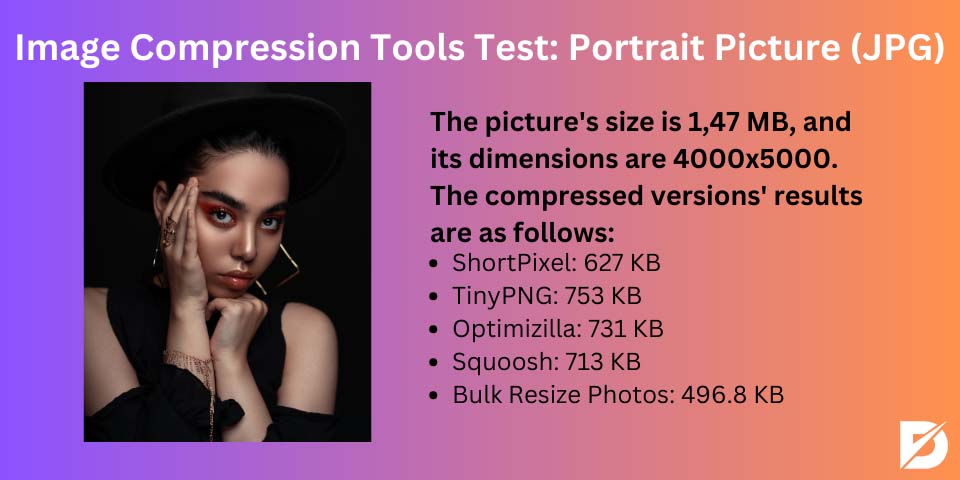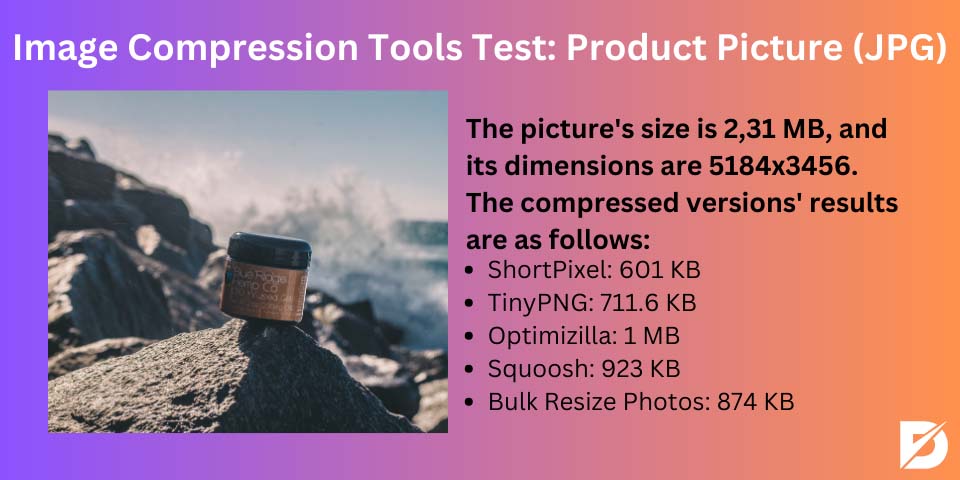We all know that web page optimization is crucial for SEO efforts. If you want to rank higher and gain organic traffic, you need to optimize your web page accordingly. Image compression is a key component of this optimization. Pictures are essential to web content because they improve user experience, communicate ideas, and make websites visually appealing. These image files, however, can also be large, resulting in slower website loading times, more bandwidth usage, and less responsiveness.
In order to address these issues, web-based image compression services have become essential resources for web designers, developers, and companies. These services provide a simple method for lowering image file sizes while maintaining image quality, enabling you to balance having a website that looks good and performing well.
To help you make decisions, we explore the world of web-based image compression services in this thorough guide. We’ll look at some of the best image compression tools on the market, arming you with the information you need to effectively optimize the photos on your website.
Web-Based Image Compression Services
Come with us as we find the best image compression software and tools;
- Squoosh
- TinyPNG
- Bulk Resize Photos
- Optimizilla
- ShortPixel

Squoosh
It is an extremely effective and user-friendly online image compression tool. Squoosh app, a Google creation, stands for its efficiency and simplicity in the field of web-based image enhancement. It appeals to inexperienced users and seasoned experts looking to improve their site content because of its user-friendly layout.
JPEG, PNG, WebP, and other image formats are among the many that Squoosh supports. Its adaptability guarantees compatibility with varied web design and development requirements. The real-time preview, which enables users to observe the instant consequences of compression settings, is one of its unique characteristics. Users can choose the ideal compromise between image quality and file size thanks to this feature.
TinyPNG
As listed with the best image compression tools, TinyPNG has earned a reputation for being straightforward and efficient in reducing image file sizes while preserving high-quality graphics. TinyPNG.com is a useful image compression tool for online optimization, regardless of whether you work as a web developer, designer, or company owner.
TinyPNG stands out with its sophisticated compression techniques and algorithms. It comes with options for both lossy and lossless compression. By preserving outstanding visual quality, lossy compression selectively eliminates image details to produce reduced file sizes. On the other side, lossless compression preserves all image data while achieving appreciable file size reductions.
With lots of qualifications and features, TinyPNG stands as one of the best image compression tools in the online world.
Bulk Resize Photos
Bulk Resize Images is a reputable web-based image compression solution with a solid reputation for effectiveness and usability. That platform serves users who need to mass bulk image compression and resize many photographs, making it an essential tool for corporations, web designers, and photographers.
Its key area of strength is bulk image compression, as the name would simply imply. Several photos can be simultaneously uploaded and compressed by users, saving both time and effort. Bulk Resize Photos offers custom resizing capabilities, allowing customers to define photograph dimensions in addition to compression. When producing photographs for various needs, this capability is extremely helpful for you.
Optimizilla
Optimizilla is a popular online image compression tool designed to simplify and reduce image file sizes without compromising quality. What is best about Optimizilla is it is free and open to everyone. It is available to a wide range of users, from bloggers and website owners to graphic designers, who seek a quick and accessible solution for image optimization.
Because of its exceptional simplicity, Optimizilla is a great option for new users who want an easy way to compress images. A big plus, especially for applications with big image collections, is the ability to handle numerous images at once. Due to the fact that Optimizilla is a free image compression tool, even those on a tight budget or who just sometimes need to compress images can use it.
ShortPixel
ShortPixel is a reputable and reliable web-based image compression tool. It is well-known for its thorough method of image compression for blog images, websites, and other digital platforms. It has developed a solid reputation as a reliable solution for increasing online performance among web developers, designers, and enterprises.
Lossy, glossy, and lossless solutions are among the different image compression modes that ShortPixel provides. Users can select the image compression level that best meets their unique needs, whether for image fidelity preservation or web optimization.
Image Compression Tools Test
As we described the tools above, we thought that the best way to understand which one is best is to test each one of them respectively. We will upload different JPG pictures to see their compression rate.
Before we share the results, we can say that we were delighted with the outcomes from each website regarding the quality of the pictures.
Results Data;
- Nature Picture (JPG): The original file’s dimensions are 3840×2460, and its size is 2,05 MB. The compressed versions’ results are as follows:
- ShortPixel: 323 KB
- TinyPNG: 509.6 KB
- Optimizilla: 985 KB
- Squoosh: 674 kB
- Bulk Resize Photos: 456 KB

- Portrait Picture (JPG): The picture’s size is 1,47 MB, and its dimensions are 4000×5000. The compressed versions’ results are as follows:
- ShortPixel: 627 KB
- TinyPNG: 753 KB
- Optimizilla: 731 KB
- Squoosh: 713 KB
- Bulk Resize Photos: 496.8 KB

- Product Picture (JPG): The picture’s size is 2,31 MB, and its dimensions are 5184×3456. The compressed versions’ results are as follows:
- ShortPixel: 601 KB
- TinyPNG: 711.6 KB
- Optimizilla: 1 MB
- Squoosh: 923 KB
- Bulk Resize Photos: 874 KB

First Impressions
From the first impressions we got, all the tools are quick enough to get the picture according to the above list. The fastest one was ShortPixel, followed by TinyPNG, and so on. Most tools, like Bulk Resize Photos, Squoosh, and Optimizilla, offer the feature of choosing the quality percentage of the picture you uploaded. Thus, you can select and adjust the settings according to your needs easily. For the sake of the test, we tried to put the settings even in each platform for you. Since all of them are free image compression tools, it was a very beneficial and quick process for us to enhance our SEO endeavors.
ShortPixel Results
ShortPixel provided the best image compression compared to the other tools I tried. The free tool from ShortPixel is really just a sales pitch to persuade you to upgrade to their paid product. That will allow you to add more features and remove the file size limitations. If you are trying to upload a lot of pictures at the same time, ShortPixel allows you to download them one by one. That can be time-consuming if you have lots of photographs and have limited time.
What is great about ShortPixel is that it comes with a WordPress Plugin. Its plugin is better if you have a WordPress website since you can do bulk image compression. It can immediately compress the images on your website if you add them to your media library.
One additional advantage of the plugin is that you can choose a maximum width or height for photos. So that ShortPixel can automatically resize the images. Hence, clients can’t upload images that are 6000 pixels wide (1920 pixels is more than enough!).
We cannot say that the webpage interface was our favorite, but we can definitely suggest the WordPress Plugin since it is best for your WordPress websites.
TinyPNG Results
Compressing your photos is surprisingly easy with TinyPNG. Simply drag and drop your file onto the website (or up to 20 files at once). After you upload your files, your photographs will begin to be analyzed and compressed right away. Actually, there are no options to select the quality of the picture or the percentage of the size. If you are sending your clients to that site, it is great, but if you want more options for your own, unfortunately, you can only upload and download. You need to download your pictures one by one manually, or you can download them in a zip file, which is great for time management.
Similar to ShortPixel, TinyPNG also offers a WordPress Plugin for image compression. You can easily and quickly compress your images on your website without dealing with websites and so on. TinyPNG stands out with its simplicity and efficiency since you do not deal with the settings of quality and so on. So, if you are looking for a simple tool without complexity, you can definitely choose TinyPNG.
Optimizilla Results
Optimizilla is similar to TinyPNG regarding interface and the amount of pictures you can upload. You can easily drag and drop your pictures up to 20.
You can really obtain a higher image compression rate when it is compared to TinyPNG because you have more fine-grain control. However, as you move the slider down, you’ll notice a difference in quality. The best option is Optimizilla if you want more control and don’t mind editing the files.
Squoosh Results
Squoosh is the most modern one when it comes to User Interface (UI). You can easily drag and drop pictures there, but, unfortunately, you can only upload them one by one. We couldn’t find a possible way that you can upload lots of images together at the same time.
Nonetheless, after you upload a file, you have the most options available, including the ability to resize the image, alter the color scheme, choose the sort of compression you wish to use, and adjust the image’s quality. There are also more advanced options that you can adjust so that you can change and adjust the format in line with your needs.
If you want more control over your image compression and uploading individually does not bother you, you can pick Squoosh for your website image compression.
Bulk Photo Resize Results
Even though it was not bad, compared to the other tools, we can say that it was the worst in our list since its job is not image compression but resizing. The ability to quickly resize a large number of photographs similarly is its greatest power, we can say.
This allows you to shrink all your photographs by a specific percentage or make them all the same width, height, or both. It’s easy to resize all your photographs (regardless of their aspect ratio) to a maximum width or height by selecting the “Longest side” resize option.
Unlike the other tools we tested, it is clear that Bulk Photo Resize is the fastest among all. Since they do not upload pictures to their servers, you can upload and resize photographs up to 150 in 60 seconds. Once you upload it, you can select its options to resize the photograph and change its format to JPG, PNG, or WEBP.
If you want a tool to resize your photos easily and bunch photos together, you may prefer Bulk Photo Resize.
Conclusion: Optimizing Images for the Digital World
The choice of the best web-based image compression service is crucial in today’s digital environment, where web optimization and user experience are crucial. There is a tool to fit any need, from the ease of use and effectiveness of Squoosh to the batch processing skills of Bulk Photo Resizes. The deep customization provided by ShortPixel and the straightforwardness of Optimizilla are also crucial. These services offer a range of functions, whether you’re a newbie looking for quick fixes or an expert needing exact control over picture optimization. These tools enable users to achieve the ideal compromise between reducing image file sizes and maintaining image quality as technology develops. It ensures that web content is aesthetically appealing, loads quickly, and improves the user experience.
Frequently Asked Questions About
Image compression is a process of reducing the file size of an image while attempting to maintain its visual quality. It is vital for websites because smaller image file sizes lead to faster page loading times, improved user experience, and reduced bandwidth consumption. This can result in better search engine rankings and increased user engagement.
Lossy compression reduces image file sizes by permanently discarding some image data, often resulting in a slight loss of quality. Lossless compression, on the other hand, reduces file sizes without any loss in quality. Lossy compression is typically used for web optimization, while lossless compression is preferred when image quality preservation is critical.
Many web-based image compression tools, like Squoosh and ShortPixel, offer client-side processing, meaning all compression occurs in your browser, and your images are not uploaded to external servers. This approach ensures privacy and security for sensitive images.
To choose the right tool, consider factors like the level of customization required, the supported image formats, batch processing capabilities, and the desired balance between image quality and file size. Review the features and limitations of each tool to find the one that aligns with your specific project requirements.
Some image compression tools, such as ShortPixel, offer image backup functionality, allowing you to revert to the original image if necessary. However, this may not be possible with all tools, so it’s essential to check the capabilities of the specific tool you are using before compression.





No comments to show.